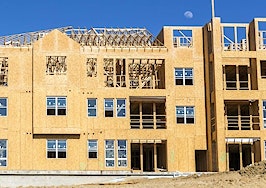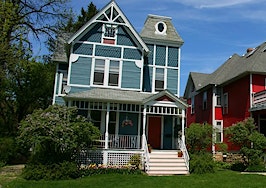- Affordability is a self-correcting, circular issue in the housing market.
- At the heart of affordability circularity: If buyers could not afford the prices being paid in any given market area, they would not pay them.
- The odds are that construction now is slow to recover like everything else after the Great Recession, but will recover. Higher prices are less “affordable” but will encourage more supply.
- Maybe there is some dysfunction -- credit, regulation, other impediment to development -- but not likely.
Brace yourselves: Soon, you’ll see assertions that U.S. housing is losing “affordability,” the leading cause of slowing sales asserted by those who have never sold a home, or provided a loan for one.
There are two legitimate economic moments when homes become unaffordable, both temporary.
[Tweet “There are two legitimate #economic moments when homes become unaffordable, both temporary.”]
First, when the Fed and or inflation force up mortgage rates beyond the ability or willingness of buyers to pay. The subsequent recession always fixes that problem.
The second circumstance is related: In recessions, unemployment rises, and the unemployed can’t afford much of anything. Sometimes it takes a long time for jobs to come back, sometimes short; sometimes a lot of jobs lost or a few, but they always come back.
[graphiq id=”evRBWnjd3db” title=”U.S. Housing Affordability Index” width=”600″ height=”608″ url=”https://w.graphiq.com/w/evRBWnjd3db” link=”http://places.findthehome.com” link_text=”U.S. Housing Affordability Index | FindTheHome”]
Every other aspect of affordability is circular, but nonetheless attractive as a social policy argument, especially among those who believe that water can be made to run uphill, or those frustrated that they can’t afford what they want. One aspect is indeed painful, and another is a policy puzzle today.
At the heart of affordability circularity: If buyers could not afford the prices being paid in any given market area, they would not pay them. Inherently self-correcting! If prices overshoot, as they often do in land-scarce markets, whole neighborhoods become Sherwood Forests of for-sale signs until prices seem reasonable to buyers. Sometimes that requires a drop in prices — more often a long flat spot, perhaps several years.
The punishing aspect of self-correction has been known for a half-century as “drive until you qualify.” Competition for the most attractive locations results in high prices and squeezes out lower-income buyers, often forcing long commutes. Most metro and resort areas have affordable-housing programs — never adequate, but laudable.
[Tweet “There is no help or hope for the stubborn or entitled.”]
There is no help or hope for the stubborn or entitled. “That house isn’t worth that!” It is if it sells. “Our children should be able to buy in their hometowns!” I do wish I could afford to buy in a few places my parents owned, but life has no guarantees like that.
The current policy puzzle is straightforward: why do we not have more new construction? The odds are that construction now is slow to recover like everything else after the Great Recession, but will recover. Higher prices are less “affordable” but will encourage more supply.
Maybe there is some dysfunction — credit, regulation, other impediment to development — but not likely. And not likely to survive political demand, a force at least as powerful as money.
Lou Barnes is a mortgage broker based in Boulder, Colorado. He can be reached at lbarnes@pmglending.com.




